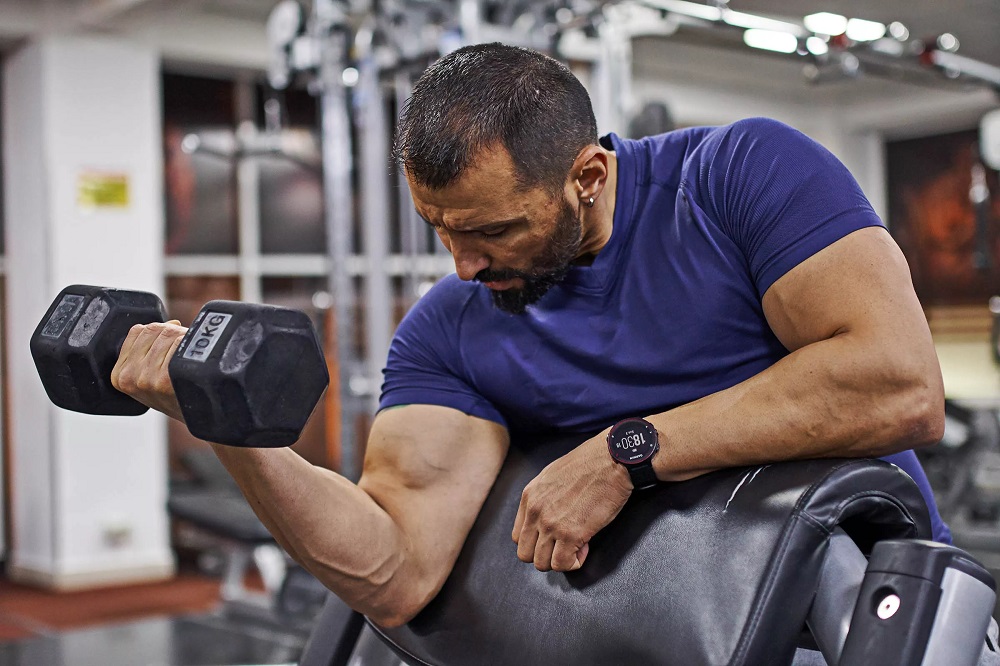Having good form is important to decrease your risk of injury, improve muscle gain and performance, and as well as increasing the overall flexibility of the body and the muscle.

In today’s digital age, with the omnipresence of the internet and YouTube, many individuals turn to these platforms as their primary sources of information about exercise and working out.
This trend has several advantages. It facilitates easier and more accessible learning, enabling people to acquire knowledge more efficiently than ever before.
However, there is a downside to this convenience. The online space allows individuals to voice their opinions, even when they may be incorrect. The internet is rife with varying advice on how to achieve fitness goals, whether it’s shedding those last 10 pounds or gaining extra muscle.
Yet, often, the truth is much simpler than it seems. Many sources may withhold accurate information due to hidden motives, such as pushing a product or serving other vested interests.
Undoubtedly, many of you reading this can recall instances, whether at the gym or elsewhere, when you’ve encountered conflicting advice about workout techniques or training strategies. While there are generous and knowledgeable people within the fitness community, like personal trainers who possess specialized knowledge, you’ll often find that even seemingly imposing individuals at the gym are approachable and willing to offer guidance and insights.
One concept that you’re likely familiar with by now, given your presence here, is the emphasis on maintaining good form during exercises. Whether you’re new to the world of working out or a seasoned enthusiast, it’s important to address questions such as:
Is working out with proper form truly essential? And if it is, what are the compelling reasons behind its significance?
In the following sections, we’ll delve into the importance of exercising with proper form and explore the compelling reasons why you should adopt this practice.
First of all, what does it mean to have good form?
Before delving into the aforementioned questions, it’s crucial to establish a clear understanding of what is meant by the term “good form” and the connotations it carries.
Frequently, you’ll encounter statements like “proper form is essential for this exercise” or “optimal results require maintaining good form.” Therefore, it becomes essential to explore the fundamental concept behind this phrase: what does it truly mean to have good form?
In essence, the concept of good form can be succinctly summarized. It predominantly revolves around executing exercises with two key principles in mind: a complete range of motion and the deliberate absence of momentum.
In simpler terms, having good form entails performing exercises in a manner that fully engages the targeted muscles throughout the entire movement, while also refraining from relying on momentum to execute the motion.
1. A full range of motion
Without delving into the underlying reasons for prioritizing a full range of motion, it’s important to grasp the fundamental concept: a full range of motion in an exercise is straightforward to comprehend.
Imagine performing an exercise from its highest point down to its lowest point, utilizing the complete extent of movement that the exercise allows. This, in essence, is what constitutes a full range of motion.
To illustrate this with a simple example, let’s consider the bicep curl. The bicep curl stands as one of the most accessible and uncomplicated exercises, involving the act of lifting a weight, holding it by your side in a relaxed position, and then curling the weight upwards.
Using the bicep curl as an illustration, executing a full range of motion entails initiating the movement from the very bottom, the resting position, and diligently raising the weight to the uppermost point achievable. This involves fully flexing the elbow to draw your hand toward your shoulder.
2. Controlling the weight: Limiting momentum
In addition to having a full range of motion, what is equally as important is controlling the weight itself. It doesn’t matter how good your range of motion is if you swing the weight without any control or tension on the muscle, as this will not yield the desired results.
Many times you’ll see people swing the weight instead of using their own strength. Rather than lifting the weight with controlled effort, they often rely on momentum as an aide.
A common example of this would be someone performing a bicep curl and swinging their entire body to lift the dumbbell. However, the proper way of doing this is keeping the rest of the body as still as possible and lifting the hand upwards by flexing the bicep.
This is quite possibly the most important aspect of having good form. It significantly decreases the likelihood of injury due to the inability to handle heavier weights. If you’re using momentum and swinging weights that your muscles cannot handle, there’s a high chance of hurting your joints if you lose control.
Moreover, swinging the weight diminishes tension and strain on the muscle. While the objective might be to merely lift the weight, the real goal in this situation is to gain muscle.
Many people may be tempted to pick up a 30 lb dumbbell for curls when, in all likelihood, a 15 lb dumbbell would suffice to achieve the same effect and generate better pump and tension on the muscle.
The primary goal of working out in this situation, as previously mentioned, is muscle gain. As such, it’s vital to focus on targeting the muscle as much as possible by limiting other factors, including momentum and the recruitment of other muscles in the body.
So, why is having good form so important?
Now that we’ve defined what it means to have good form and how to achieve it, let’s delve into why having good form is of paramount importance.
There are several compelling reasons why maintaining good form is crucial. These reasons span a spectrum, from reducing the risk of injury to enhancing muscle gain.
1. Reducing Risk of Injury
First and foremost, everyone’s main priority should be targeted towards their health. This is why you should be working out in the first place: for better physical and, in some cases, mental health. The aim is to feel better about yourself, live longer, and enjoy a better quality of life.
As health is our primary concern, we must also consider the risk of injury. If our goal is to maintain good health, then avoiding injuries is paramount. Sustaining an injury can lead to weeks, if not months or years of pain in the future.
Our focus should be on longevity and well-being, striving to minimize the chances of injury. This is precisely why having good form is so important, if not one of the most crucial reasons.
When someone lacks proper form and relies on momentum to move a weight beyond their capacity, they significantly increase the risk of injury. Take, for example, an individual who uses momentum to swing the weight during a bicep curl, rather than engaging the desired muscle.
Beyond the fact that this approach sacrifices muscle gain, consider that using a weight you can control instead of swinging a heavier one is a wise choice. Opting for a smaller weight, and controlling it with deliberate movements, reduces the risk of injury and fosters better muscle growth, which, in turn, helps prevent future injuries.
The best way to decrease the risk of injury is by ensuring you perform exercises correctly and with a deliberate, slower pace. While you may see individuals in the gym foregoing this approach, trust me when I say that, especially in the beginning, relying on momentum or incorrect form is not advisable.
Starting with lighter weights and using the desired muscles rather than relying on momentum and improper form is a superior strategy. This helps minimize the risk of injury and sets the foundation for sustainable muscle gain.
2. Increased muscle gain
Despite what many will have you believe, the weight you’re lifting isn’t always the most crucial part of the exercise.
If our true goal is to efficiently maintain and gain muscle, it’s not always best to prioritize heavier weights at the expense of good form.
The key to a beneficial exercise lies in maintaining tension on the muscle.
Using our earlier example, swinging a dumbbell to complete a curl might not effectively target the muscle. Instead, it could recruit other muscles like the shoulders, chest, and even legs due to improper form.
In essence, having good form and a full range of motion, minimizing momentum, is crucial for optimal muscle targeting and maintaining intensity.
While you might be tempted to lift heavier weights, remember that it’s not just about the weight, but how well you lift it.
The key to muscle gain is simple: maximize intensity and recovery. Focus on exerting maximum effort on the desired muscle and ensuring proper recovery.
Using heavier weights unnecessarily can lead to excessive fatigue, robbing energy that could be directed towards other exercises.
When is it okay to have bad form?
You might be thinking to yourself, if it’s so important to have good form while exercising, why do many individuals exercise with poor form?
The truth is, many individuals, particularly if they’re inexperienced, don’t know how to train with good form or that it’s important. I’m here to inform you otherwise, because I’ve been there and so has everyone else who has ever started lifting.
Another truth is that some people lift with bad form due to perspective and timing.
Many times you might see the biggest and most experienced people in the gym, lifting with poor form, doing partial reps, and using momentum.
It’s most crucial to train with proper form when starting out, not as much when you’re already advanced and know how to control your body and move the weight without harming yourself.
Being true, this is the reason why many experienced individuals can use poor form but also still target the desired muscle, due to increased experience and a tactic to train harder.
Experienced individuals often train to failure. I wrote an article on why training to failure is important, so if you want to learn more, check that out.
However, those who train to failure often perform most reps with perfect or near perfect form. Nearing the end, partial reps or momentum may be used to squeeze the last bit of energy from muscles.
